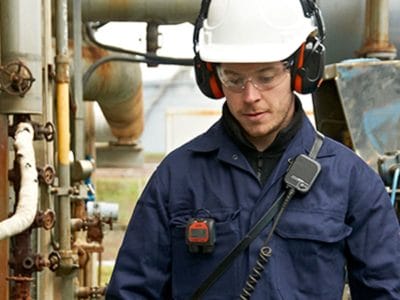
Monitoring Benzene
Formula: C6H6 | CAS: 71-43-2
Protecting both people and the environment while meeting the operational needs of your business is paramount and if you have operations in the US you will be well aware of the requirements of the Code of Federal Regulations (CFR).
Similar legislation exists worldwide, the common theme being an onus on hazard identification, risk assessment and the provision of appropriate control measures.
An Introductory Guide to Benzene Exposure Legislation
Properties | Exposure | Going Forward
Whilst there is nothing new in the concept of workplace exposure limit values a more recent EU Directive 2017/164/EU has introduced indicative occupational exposure limit values (IOELV). These are health-based, non-binding values, derived from the most recent scientific data available and availability of measurement techniques. For any chemical agent for which an IOELV has been set at the EU level, Member States are required to establish a national occupational exposure limit (OEL) value. They are required to take into account the EU limit value, determining the nature of the national limit value in accordance with national legislation and current practice.
– European Agency for Health and Safety at Work (EU-OSHA)
”Recognising the specific concerns over benzene, a hazardous carcinogenic chemical, the EU has turned to the European Chemicals agency (ECHA) to “review and evaluate the information already available and assess the most recent scientific information”. The review, entitled Proposal in support of occupational exposure limit values for benzene in the workplace was published for public consultation in October 2017 and final “opinions” will be published by 26th March 2018. The aim of the review will be to make recommendations to the next (4th) amendment to the directive on carcinogens.”
European Chemicals Agency (ECHA)
Occupational Exposure Limits
Dangerous substances, in liquid, gas, or solid form that pose a risk to workers’ health or safety can be found in nearly all workplaces. According to the European Agency for Health and Safety at Work (EU-OSHA), 15% of workers across the European Union (EU) have to handle dangerous substances as part of their job, and another 15% report breathing in smoke, fumes, powder, or dust at work which could be hazardous to their health.
In addition, Directive 2004/37/EC was specifically introduced for carcinogens or mutagens at work and essentially requires that the employer assess and manage the risk of exposure to carcinogens or mutagens and to:-
- limit the quantities of a carcinogen or mutagen at the place of work;
- keep as low as possible the number of workers exposed;
- design the work processes so as to minimize the substance release;
- evacuate carcinogens or mutagens at source, but respect the environment;
- use appropriate measurement procedures (especially for early detection
of abnormal exposures from unforeseeable event or accident); - apply suitable working procedures and methods;
- use individual protection measures if collective protection measures are not enough;
- provide for hygiene measures (regular cleaning);
- inform workers;
- demarcate risk areas and use adequate warning and safety signs (including ”no smoking”);
- draw up emergency plans;
- use sealed and clearly and visibly labeled containers for storage, handling, transportation, and waste disposal.
Download our FREE Guide
“An Introductory Guide to Benzene Exposure Legislation”
An introductory guide to benzene exposure legislation guide which can be downloaded below provides the reader with an in-depth balance of knowledge covering occupational exposure limits and information on understanding as an employee/worker what your workplace exposures are.














